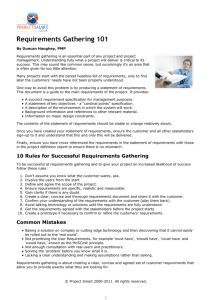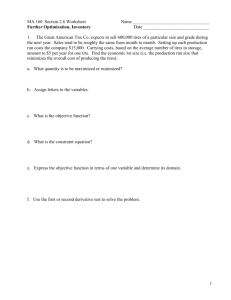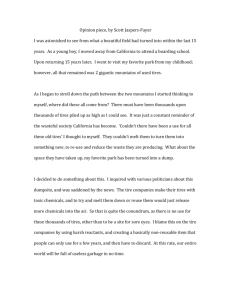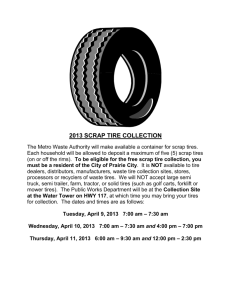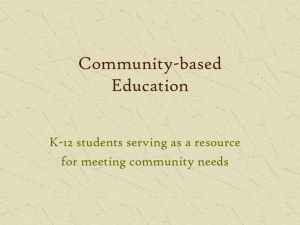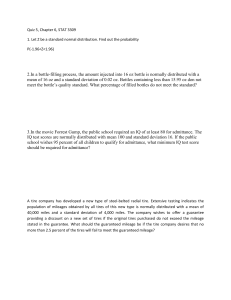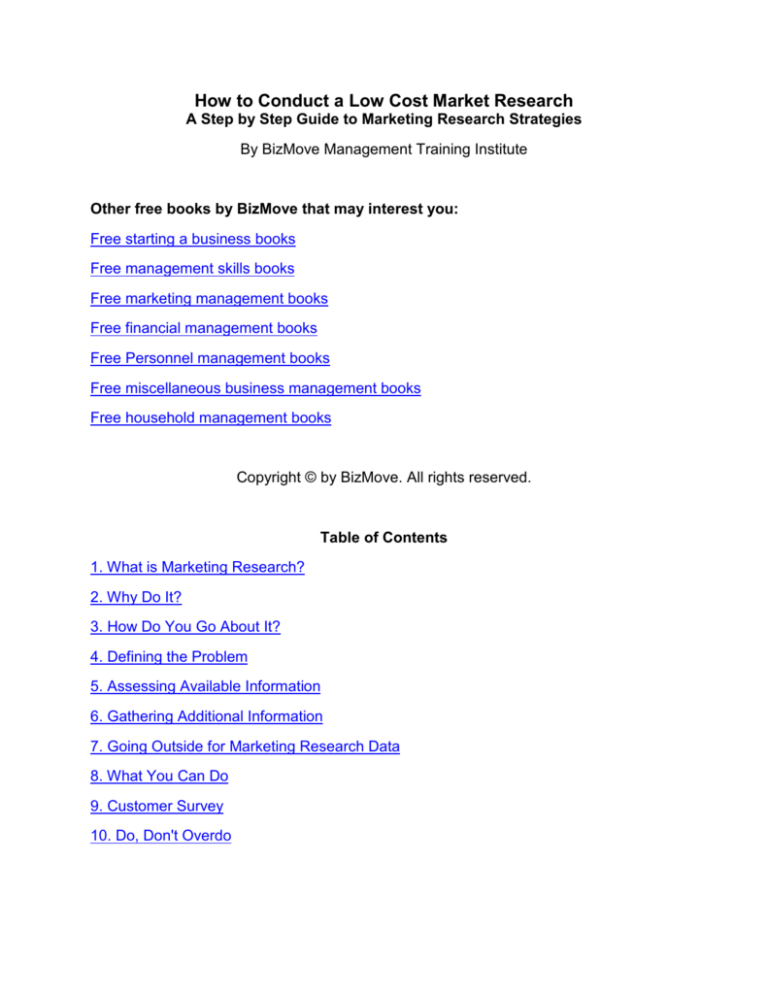
How to Conduct a Low Cost Market Research
A Step by Step Guide to Marketing Research Strategies
By BizMove Management Training Institute
Other free books by BizMove that may interest you:
Free starting a business books
Free management skills books
Free marketing management books
Free financial management books
Free Personnel management books
Free miscellaneous business management books
Free household management books
Copyright © by BizMove. All rights reserved.
Table of Contents
1. What is Marketing Research?
2. Why Do It?
3. How Do You Go About It?
4. Defining the Problem
5. Assessing Available Information
6. Gathering Additional Information
7. Going Outside for Marketing Research Data
8. What You Can Do
9. Customer Survey
10. Do, Don't Overdo
1. What is Marketing Research?
To be successful a business must know its market. Marketing research is simply an
orderly, objective way of learning about people - the people who buy from you or might
buy from you.
This Guide provides an overview of what market research is and how it's done. It
introduces inexpensive techniques that business owner-managers can apply to gather
facts about their customers and the people they'd like to have for customers.
Basically, the purpose of marketing research is to find out what catches customers'
attention by observing their actions and drawing conclusions from what you see. To put
it more formally, in the words of the American Marketing Association, marketing
research is "the systematic gathering, recording, and analyzing of data about problems
relating to the marketing of goods and services."
Marketing research is an organized way of finding objective answers to questions every
business must answer to succeed. Every business owner-manager must ask:
Who are my customers and potential customers?
What kind of people are they?
Where do they live?
Can and will they buy?
Am I offering the kinds of goods or services they want - at the best place, at the best
time, and in the right amounts?
Are my prices consistent with what buyers view as the products' values?
Are my promotional programs working?
What do customers think of my business?
How does my business compare with my competitors?
Marketing research is not a perfect science; it deals with people and their constantly
changing likes and dislikes which can be affected by hundreds of influences, many of
which simply can't be identified. Marketing research does, however, try to learn about
markets scientifically. That simply, is to gather facts in an orderly, objective way; to find
out how things are, not how you think they are or would like them to be; what people
want to buy, not just what you want to sell them.
Go to Top
2. Why Do It?
It's tough - impossible - to sell people what they don't want. (Remember the Nehru
jacket?) That's pretty obvious. Just as obvious is the fact that nothing could be simpler
than selling people what they do want. Big business has to do market research to find
that out. The same reason holds for small business.
business owners often have a "feel" for their customers - their markets - that comes
from years of experience. Experience can be a two-edged sword, though, since it
comprises a tremendous mass of facts acquired at random over a number of years.
Information about markets gained from long experience may no longer be timely
enough to base selling decisions on. In addition, some "facts" may be vague,
misleading impressions or folk tales of the "everybody knows that..." variety.
Marketing research focuses and organized marketing information. It ensures that such
information is timely. It provides what you need to:
Reduce business risks,
Spot problems and potential problems in your current market,
Identify and profit from sales opportunities,
Get basic facts about your market to help you make better decisions and set up plans of
action.
Go to Top
3. How Do You Go About It?
You probably do some market research every day in the course of your routine
management activities without being aware of it. You check returned items to see if
there's some pattern. You ask one of your old customers, who has stopped coming to
your shop, why he hasn't been in lately when you run into him on the street. You look at
a competitor's ad to see what that store is charging for the same products you're selling.
Marketing research simply makes this process more orderly. It provides a framework
that lets you objectively judge the meaning of the information you gather about your
market. The following flow chart shows the steps in the marketing research process:
Define problem (limit and state clearly)
Assess available information
Assess additional information, if required:
review internal records and files
Interview employees
Consult secondary sources of information
Interview customers and suppliers
Collect (or have collected) primary data
Organize and interpret data
Make decision
Watch the results of the decision
Go to Top
4. Defining the Problem
This, the first step of the research process, is so obvious that it is often overlooked. Yet,
it is the most important step of the process.
You must be able to see beyond the symptoms of a problem to get at the cause. Seeing
the problem as a "sales decline" is not defining a cause; it's listing a symptom.
In defining your problem list every possible influence that may have caused it. Has there
been a change in the areas your customers have traditionally come from? Have their
tastes changed? Put all the possible caused down. Then set aside any that you don't
think can be measured, since you won't be able to take any action on them.
You must establish an idea of the problem with causes that can be objectively
measured and tested. Put your idea of the causes in writing. Look at it frequently while
you're gathering your facts to keep on track, but don't let it get in the way of facts, either.
(Incidentally, while this Guide speaks of "problems," the same techniques can be used
to investigate potential opportunities too.)
Go to Top
5. Assessing Available Information
Once you've formally defined your problem, you should assess your ability to solve it
immediately. You may already have all the information you need to determine if your
hypothesis is correct, and solutions to the problem may have become obvious in the
process of defining it. Stop there. You'll only be wasting your time and money if you do
further marketing research.
What if you aren't sure whether or not you need additional information at this point?
What if you'd feel more comfortable with additional data? Here, you've got to make a
subjective judgment to weigh the cost of more information against its usefulness.
You're up against a dilemma similar to guessing in advance your return on your
advertising dollar. You don't know what return you'll get, or even if you'll get a return.
The best you can do is ask yourself how much making a wrong decision will cost and to
balance that against the cost of gathering more data to make a better informed decision.
Go to Top
6. Gathering Additional Information
Think cheap and stay as close to home as possible. Before considering anything fancy
like surveys or field experiments, look at your own records and files. Look at sales
records, complaints, receipts, or any other records that can show you where your
customers live or work or how and what they buy.
One business owner found that addresses on cash receipts allowed the pinpointing of
customers in his market area. with this kind of information he could cross reference his
customers' address and the products they purchased. From this information he was
able to check the effectiveness of his advertising placement.
Your customer's addresses alone can tell you a lot about them. Obviously you can
pretty closely guess your customers' life-styles by knowing what the neighborhoods they
live in are like. Knowing how they live can give you solid hints on what they can be
expected to buy.
Credit records are an excellent source of information about your markets, too. In
addition to the always valuable addresses of real live customers, they give you
information about customers' jobs, income levels, marital status. Granting credit, so it
can be seen, is a multi-faceted marketing tool - though one with well-known costs and
risks.
When you've finished checking through your records, go to that other valuable internal
source of customer information - your employees. Employees may be the best source of
information about customer likes and dislikes. They hear customers' minor gripes about
your store or service - the ones the customers don't think important enough to take to
you owner-manager. They are also aware of the items customers request that you may
not stock. Employees can probably also give you pretty good seat-of-pants customers
profile from their day-to-day contacts.
Go to Top
7. Going Outside for Marketing Research Data
Once you've exhausted the best sources for information about your market, your
internal data, where do you go? Well, the next steps in the process are to do primary
and secondary research on the outside.
Secondary research first
Naturally, since it's called secondary research, you do it before you undertake any
primary research. Secondary research simply involves going to already published
surveys, books, magazines and the like and applying or rearranging the information in
them to bear on your particular problem or potential opportunity.
For example, say you sell tires. You might reasonably guess that sales of new cars
three years ago would have a strong effect on present retail sales of tires. To test this
idea you might compare new car sales of six years ago with the replacement tires sales
from three years ago.
Suppose you found that new tire sales three years ago were 10 percent of the new car
sales three years previous to that. Repeating this exercise with car sales five years ago
and so on, you might find that in each case tire sales were about 10 percent of the new
car sales made three years before. You could logically conclude that the total market for
replacement tire sales in your area this year ought to be about 10 percent of the new
car sales in your locality three years ago.
Naturally, the more localized the figures you can find the better. While, for instance,
there may be a decline nationally in new housing starts, if you sell new appliances in an
area where new housing is booming, you obviously would want to base your estimate of
market potential on local condition. Newspapers and local radio and TV stations may be
able to help you find this information.
There are many sources of such secondary research material. You can find it in
libraries, universities and colleges, trade and general business publications, and
newspapers. Trade associations and government agencies are rich sources of
information.
Primary research, the last step
Primary research on the outside can be as simple as your asking customers or
suppliers how they feel about your store or service firm or as complex as the surveys
done by the sophisticated professional marketing research giants. It includes among its
tools direct mail questionnaires, telephone or "on the street" surveys, experiments,
panel studies, test marketing, behavior observation, and the like.
Primary research is often divided into "reactive" and "nonreactive" research. The
"peanut shell study" at the beginning of this Guide is an example of nonreactive primary
research: it was a way of seeing how real people behaved in a real "market situation" (in
this case how they moved through the store and which displays attracted their attention)
without influencing that behavior even accidentally.
Reactive research (surveys, interviews, questionnaires) is probably what most people
think of when they hear the word "marketing research." It's the kind best left to the
experts, since you may not know the right questions to ask. There's also the danger that
either people won't want to hurt your feelings when you ask them their opinions about
your business or they'll answer questions the way they think they are "expected" to
answer, rather than the way they really feel. If you feel you can't afford high-priced
marketing research services, ask nearby college or university business schools for help.
Go to Top
8. What You Can Do
Marketing research is limited only by your imagination. Much of it you can do with very
little cost except your time and mental effort. Here are a few examples of techniques
small business owner-managers have used to gather information about their customers.
License plate analysis
In many states license plates give you information about where a car's owner lives. You
can generally get information from state agencies on how to extract this information
from license numbers. By taking down the numbers of cars parked in your location you
can estimate your trading area. Knowing where your customers live can help you aim
your advertising for good effect. Or, how about tracing your competitors' customers
using the same approach to win them for your business.
Telephone number analysis
Like license numbers, telephone numbers can tell you the areas in which people live.
You can get customers' telephone numbers on sales slips, from checks and credit slips,
and the like. As noted before, knowing where your customers live can give you an
excellent idea of the way they live and what they are like.
Coded coupons and "tell them Joe sent you" broadcast ads
You can check the relative effectiveness of your advertising media by coding coupons
and by including phrases customers must use to get a discount on some sale item in
your broadcast ads. This technique may also reveal what areas your customers are
drawn from. Where they read or heard about the discount offered in your ads will also
give you information about their tastes.
People watching
You can learn a great deal about your customers just by looking at them. How they
dressed? How old do they appear to be? Are they married? Do they have children with
them? This technique is obvious and most owner-managers get their feel for their
clientele just this way. But how about running a tally sheet for a week keeping track of
what you're able to tell about your customers from simple outward clues? It might just
confirm what you've thought obvious all the time, but it might also be instructive.
Go to Top
9. Customer Survey
If you are a business owner, these questions are for you. Have you conducted your own
private interview of customers? Have you personally talked to at least 50 to 60
customers to find out what they like or dislike about your business, products and
service?
A personalized business survey is a simple thing to prepare and implement. If you do it
regularly, you can find when and where things are breaking down in your service.
Use a piece of 8.5 x 11 inch paper with the following types of yes and no questions:
1. Is the service we provide meeting your highest expectations? If not, what areas can
we improve?
yes _____ no _____
1. ________________________
2. ________________________
3. ________________________
2. Are we providing the brands and lines you want and expect? If not, please list what is
needed.
yes _____ no _____
1. ________________________
2. ________________________
3. ________________________
3. Is our business clean and pleasant to be in at all times? How can we improve it?
yes _____ no _____
1. ________________________
2. ________________________
3. ________________________
4. Do you feel the business is truly a part of the community?
yes _____ no _____
5. Is it a friendly place?
yes _____ no _____
6. Are the prices competitive?
yes _____ no _____
7. Do you feel you are getting good values?
yes _____ no _____
You may want to include more specific questions, but the key is to keep the survey
short and to the point. Keep it personal by preparing and signing it yourself. Leave room
for written comments.
Questionnaires should not be stacked at the cash register for casual distribution.
Personally present them to customers along with a self-addressed, stamped envelope.
What can you learn from this? Plenty. What can customers learn? Well, it shows you
care and that is always a sales plus.
Go to Top
10. Do, Don't Overdo
The key to effective marketing research is neither technique nor data - it's useful
information. That information must be timely; your customers' likes and dislikes are
shifting constantly. You'll never know everything about a particular problem anyway. It's
much better to get there on time with a little, than too late with a lot. If you spend too
much time gathering too much data going for a sure thing, you may find your marketing
research is nothing but garbage.
Go to Top
****

